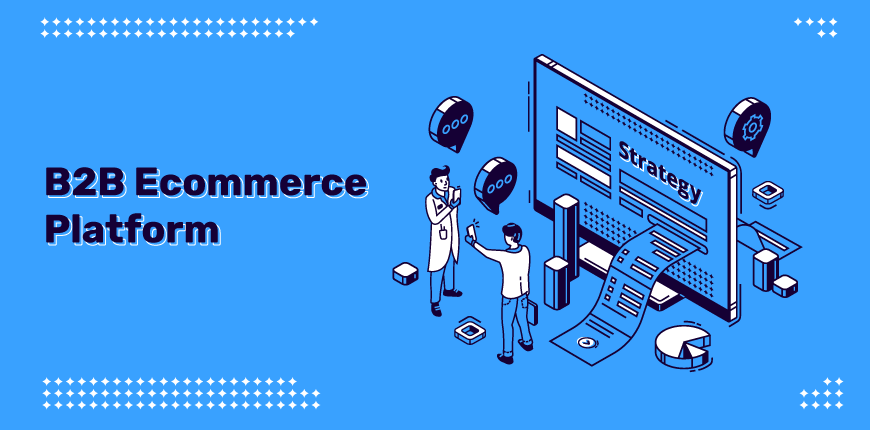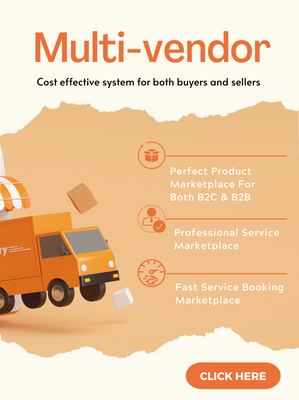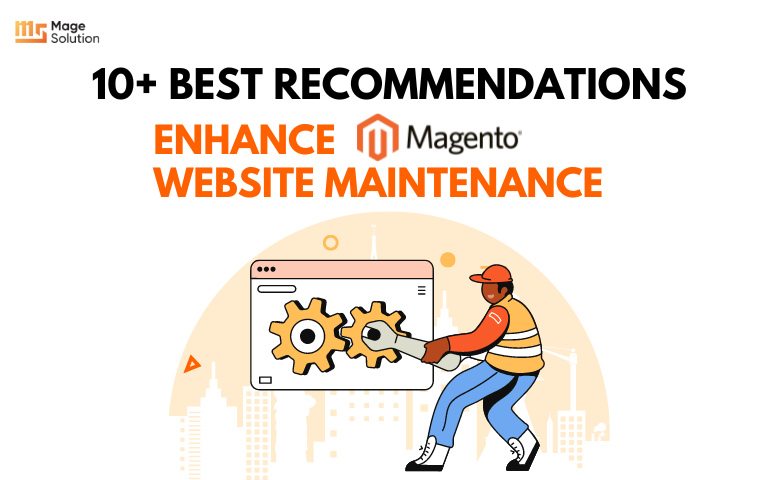Your cart is currently empty!
B2B ecommerce website development : The comprehensive guide with case studies to inspire you
The B2B phenomenon is getting bigger as more wholesalers move to the online space. B2B companies are looking for automated, web-based solutions to boost sales efficiency while diminishing their costs. This tutorial will help you to discover everything you need to start your successful B2B ecommerce website development project.
What is B2B ecommerce platform?
B2B ecommerce or business-to-business electronic commerce describes online order transactions between businesses. Because orders are processed digitally, buying efficiency is improved for wholesalers, manufacturers, distributors, and other types of B2B sellers. The B2B ecommerce space is growing rapidly.
There are several typical examples of B2B businesses, including logistics agencies, advertising agencies, software companies, graphic design services, office furniture manufacturers. Customers, as known as other companies, buy products and services from these B2B sellers to use in further production or serve for internal purposes.

How to create a B2B ecommerce website?
For anyone just starting to develop a B2B ecommerce website, we would suggest the following steps, especially at the beginning of the process:
Understanding that your website has “Legs” :
Your website affects almost every aspect of your business such as: Sales/Marketing, Customer Service, Accounting, and Information Technology. When you start to put your website strategy together, make sure your website can reach each corner of your organization.
Resource Planning
Combine with the development of your website strategy, stakeholder alignment, etc., remember that you need to plan resources. This includes how you leverage internal resources, outsourcing, and who will champion and project plan this effort.
Platform Selection.
In conjunction with the development of your website/digital strategy, there may not be another choice that is as essential; the research effort up-front around the platform is mission-critical. When you’re thinking about which eCommerce platform is most appropriate, remember the “legs” of the website.
- Determine business and technical requirements
- Make sure the platform aligns with your long-term business goals
- For each platform, note the total cost of ownership (TCO), the payback period, and tools and methods for measuring ROI
If you want to have an engaging and robust website, hiring a B2B eCommerce website development team is the most effective solution. Customer-driven service, reasonable price and optimal progress are key factors of trustworthy outsourcing partners. If you require assistance in building a B2B eCommerce website, please contact us! We will provide you with all the necessary solutions to help you create a compelling B2B ecommerce website.
Choose a template
Most of the B2B ecommerce platforms have different third-party templates available which can allow you to customize the site’s appearance and feel. Some are free but don’t be afraid to pay a little money for a unique theme for your website and even ask your developer to further tweak it if needed.
B2B Magento Theme: GemMart – Marketplace Multipurpose Magento 2 Theme
Integrations
If choosing a template is all about customizing the appearance and feel, then choosing your integrations is like changing the way that it actually behaves. For example, because Magento is an open-source B2B ecommerce platform, there are various third-party integrations covering everything from payments and terms and conditions to shipping, marketing, and more.
Must-Haves on your B2B ecommerce Website
Many B2B sites are missing one or several elements that could increase sales and improve customer experience. These are some elements to create a stand-out eCommerce website that maximizes your profits.
1. Customer registration
While B2C websites often let purchasers checkout without registering, it should be essential for B2B buyers to register on your website. Not only will it help your customers to verify that they are indeed businesses and get a wholesale discount, but it can help your website to store invoices and purchase orders.
2. Security
Selling online requires a high level of data security. At a minimum, plan to secure your site using SSL certificates, provide user authentications, and set up permission rules. If you handle online payment transactions, work with your card processing services and be sure you are PCI (Payment Card Industry) compliant.
- Protect your customers with SSL: An SSL certificate means no one can intercept your clients’ sensitive information. When you go to a website and their URL says “https://” instead of “http://” that means it’s secured by SSL. Smart shoppers know to look for these things. They may even get a glaring warning when they visit your site saying that they are not protected. They’ll be turned off by an insecure platform or may stop accessing your website at all.
- Protect yourself from GDPR violations: The General Data Protection Regulation (GDPR) is a big problem for sellers targeting the European Union (EU). In May of 2018, it changed the game regarding privacy and transparency. Primarily, it’s important for your clients to know exactly what you plan to do with their information. It can be complicated, but with the support of free GDPR extension, you integrate to your website to protect your business from GDPR violations.
3. Secure, flexible payment portals.
For B2C websites, demanding a credit card or Paypal for payment makes sense, but on your B2B site, you need to allow your clients to checkout and pay any way they need to. Offering flexible payment options for credit, debit and even BACS payments alongside offline transaction terms can allow your customers checkout with a solution that suits them
4. Include bulk order options and discounts
When it develop a B2B ecommerce website, you should consider your volume of orders. There are two specific features you need to combine on your B2B ecommerce website that you may not on a B2C website:
- Minimum order quantity: If you sell your products in wholesale quantities then you don’t want to waste your time shipping ones and twos in tiny orders. Besides, This feature helps you weed out bargain customers and move inventory more quickly. If you do opt for this, ensure you set the minimum order levels at the product level for quantity or set a minimum order amount for a total order value. Having a B2B ecommerce website, that means you’re going to own large supply of products to get sell on a day-to-day basis. You’ll want to check and identify what some solid minimum order quantities are based on your ideal shoppers and ROI.
- Bulk order discounts: Bulk Order Discounts help your business competitive and encourage your customers to come back for more. You can provide a discount on larger quantities ordered. So if your client was originally going to only order a batch of 10 of a product (at full price) but there’s a discount on 20, it moves the needle as many of those clients will purchase the savings. This is an essential feature in the wholesale business, though you can also run discounts strategically based on expiration dates and product updates.
5. Re-order or quick order functionality.
Placing large orders with multiple SKUs can become arduous if not solved properly. Offering a bulk order form so that clients can add products by part number or SKU and being able to instantly change the order quantity for each line can streamline this process and expedite the checkout experience. For extra brownie points, help the shoppers to reorder previous transactions from within their account area and make repeat purchases easy.
6. Multi-user accounts.
Make it effortless for a company to use a single account to access your products. The easiest way to do this is to have the account belong to the company, not to an individual. That way, anyone in the company with the right credentials can log in and use the account. The easy way to do this is to allow users to generate an umbrella account, then register as separate individuals. This will make it simple for the company to see who ordered what.
7. Other Features:
- Add an advanced and sophisticated search
- Include a VAT price toggle
- In-depth product images with a 360 view of your product
- Have Live customer support
- Responsive Mobile Design
- Simple Navigation
B2B eCommerce case studies to inspire you
Study these 10 brands and see how they mastered the art of selling online, gained brand awareness, and even doubled their business revenue.
Blake Envelopes
Blake Envelopes is considered as one of the most inventive and accurate example of B2B eCommerce. This website comes with a highly clean design and fantastic functionality, and incredible benefits represented by education and corporate responsibility initiatives. Moreover, a large product selection was showcased logically, with filtered navigation and a user-friendly site search tool. On top of that, the well-thought-out design supports product searches by color, range, and style, as well as pack sizes, kinds, opaques, and so on.
Rainbow Treecare
Rainbow Treecare is a tree and plant health care company. They wanted to take their business international, so they used Magento Commerce 2.2 to achieve your business goals. Their B2B sales business consists of building a range of healthcare products for tree care professionals, landscapers, and government agencies. Moreover, they offer cost-effective, sustainable solutions to caring for trees and plants in cities, neighborhoods, and beyond.
ACME
The 3D, a printing company 3DXTech is also a great example of a B2B eCommerce website that’s invasive yet successful. Many eCommerce sites opt to utilize popups and banners, but they are usually annoying and counterproductive. However, that’s not the case with 3DXTech. Its popup is well-designed and offers a free product if you decide to provide your email. Moreover, its top banner always highlights a product that just came back in stock again. In addition, the company provides rewards for things like shares on social media and reviews.
Steelcase
Steelcase, a B2B company in the office furniture industry. They encountered some problems with their existing platform and decided they needed to make a change. They needed a modern and flexible platform to service the customers of all sizes and works with a wide network of dealers. Also, there should be necessity to showcase their vast range of build-to-order products on their website and ordering options. Therefore, they implemented A shift to Magento.
Selco
Selco Builders Warehouse, a British brand connects building contractors and tradespeople with building material goods.
As a B2B sales business that values digital expansion and creative advertising, Selco used the Magento to connect with entrepreneurs and businesses online. However, they recognized that contractors are busy customers, so they wanted to eliminate the headaches of searching for materials and tools in a vast catalog. On top of that, to support their customers to find what they want conveniently, they built the Project Tool App. This app supports tradespeople with project management, finding products online, and communicating with their team, no matter where they are.
Wrapping up
B2B eCommerce is a great approach to get new consumers and build revenue for your company. Defending targets and considering your resources is a must before developing a B2B ecommerce site! After that, you will imagine and clear what your site looks like and which functionality are significant. 



